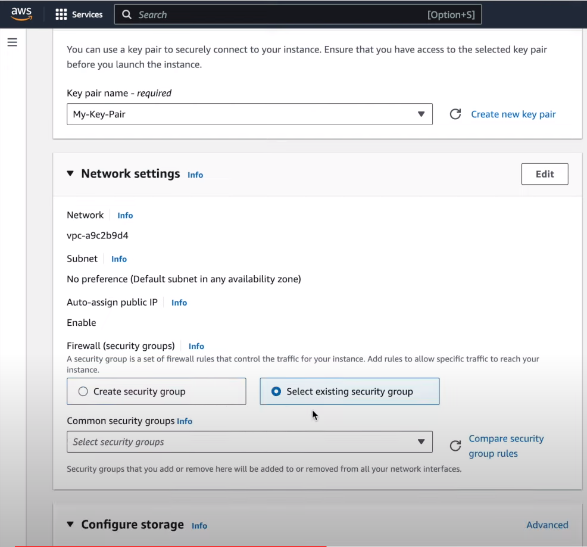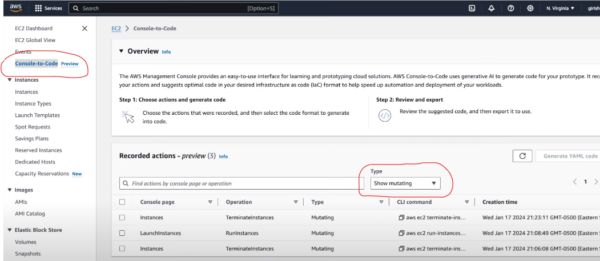AWS DevOps Automation CONSOLE TO CODE is a streamlined approach to implementing and managing DevOps practices in an AWS environment. This approach utilizes the tool or framework called CONSOLE TO CODE. CONSOLE TO CODE allows developers and operations teams to transition seamlessly from using the AWS Management Console (a graphical user interface) to coding and automating their infrastructure and application deployments. It provides a more efficient and scalable way to configure, provision, and manage AWS resources through infrastructure as code (IaC) principles.
This transition offers several advantages, including repeatability, consistency, and treating infrastructure changes as code changes. It aligns with the principles of DevOps by promoting automation, collaboration, and faster, more reliable delivery of applications. CONSOLE TO CODE uses generative AI in the back end to capture all the actions on the Management Console and allows the creation of a script out of it. In principle, whatever you have done in the Management Console, you can convert into the script, and gives you a head start on your automation. It only supports EC2.
Steps involved in CONSOLE TO CODE automation
Step 1. Go to AWA Management Console and then to EC2.
Step 2. Click on the Launch Instance button.
Step 3. Scroll down to Network settings, and click on Select existing security group.

Step 3. Select RDS-Security-group as the Common security group.
Step 4. Click on the Launch Instance button.
Step 5. Click on the new instance created.
Step 6. In the running state of the instance, go to Console-to-Code Preview on the left panel.
Step 7. From there select Show mutating under Type.

Step 8. Choose the RunInstances, and you can add a maximum of five actions to it.
Step 9. Select Generate YAML code as the operation.
The YAML code will be generated and will give the reasoning for creating the code. And this is using generative AI in the back end. You can either copy the code or download it.
Step 10. Click on the Download button. Then, open it in the Visual Studio.
Step 11. Go to the user guide for cloud formation template formats and copy the first two lines of the code.
Step 12. Go to the visual studio, remove the reasoning part, and paste the copied code there. This is used as a script or template for stack creation.
Step 13. Open the downloaded template and click the Next button. Then, provide a stack name. Again, click the Next button.

Step 14. Keep everything default and click the Submit button.
If you go back to the AWS Console, you can see that an instance has been created. EC2 instance is created. So, whatever script we got as part of the Console to Code it creates an EC2 instance.
Conclusion
CONSOLE TO CODE can achieve speed, agility, and consistency in their DevOps processes. It enables the automation of tasks such as infrastructure provisioning, application deployment, and configuration management, leading to efficiency, reduced manual errors, and increased scalability. Overall, this approach simplifies and accelerates the implementation of DevOps practices in AWS environments.
Metclouds Technologies helps in streamlined and efficient deployment processes with AWS.


